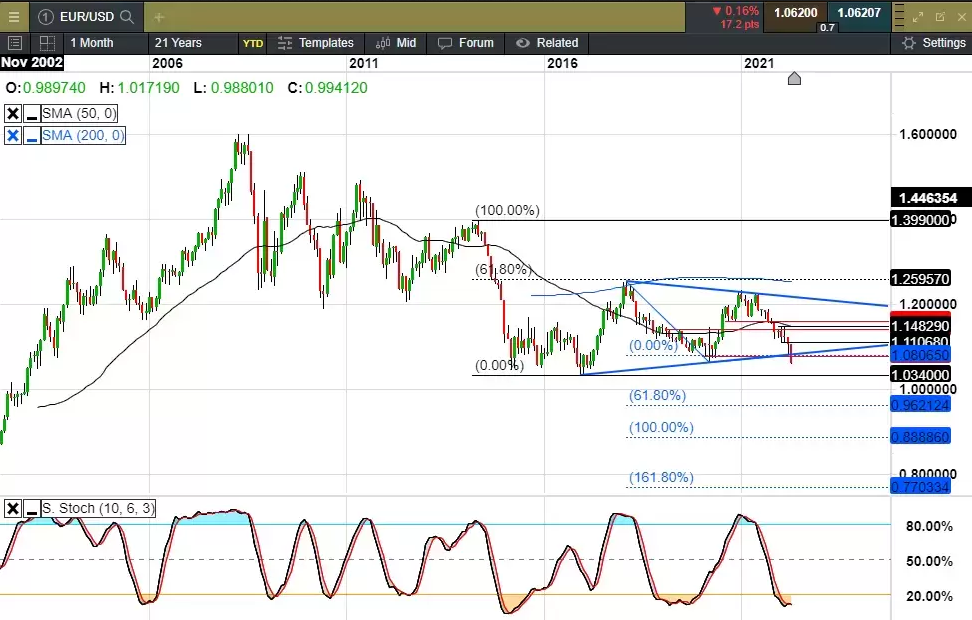The problems facing the euro have always been well known, trying to navigate the intricacies of a European economy that has divergent strengths and weaknesses, from the Baltic states in the North, to the well-known problems that have given the European Central Bank so many problems in the South.
Trying to manage a coherent approach to monetary policy has faced its challenges over the last 12 years, and was something previous President of the ECB, Mario Draghi managed to navigate with skill and some aplomb, although being Italian he also had a lot of skin in the game, when it came to navigating the contradictions inherent in monetary union. Draghi was also lucky that inflationary concerns weren’t a problem for the entirety of his 8-year tenure.
Sadly, for his successor, Christine Lagarde, she faces a whole host of different problems, including a war on Europe’s doorstep, as Russia looks at running over Ukraine, and potentially looking to interfere in Moldova as well, and an inflation rate that varies from 4.5% in France to 15.2% in Estonia.
With energy prices set to remain high for quite some time and these costs set to filter through into core prices in the coming months, the ECB facing the prospect of having to raise rates into the teeth of an economic slowdown, or stagflationary environment, while the US Federal Reserve has signalled it not only wants to hike rates from 0.5% to over 3% in the next 12 months.
That’s even without pricing in the prospect that the US central bank could start looking at winding down its balance sheet, with talk circulating that this could start as soon as next week to the tune of $95bn a month.
Even if the ECB were to start hiking rates as soon as July that still leaves a lot of open water when it comes to rate differentials, and that’s even before you start to price in the fact that Europe is a lot more sensitive to energy price rises to their reliance on Russian energy.
EU CPI is already at a record high of 7.6%,and could go higher this week for May, and the weakness in the euro is only likely to exacerbate this trend of higher prices with commodity prices at multi year highs across the board.
The ECB has said it isn’t seeing any signs of stagflation, yet it seems to be in denial, and with little sign of a de-escalation by Russia as it weaponizes energy supplies, it's highly likely that the ECB’s room to raise rates could well be very limited.
This in turn could increase downward pressure on EUR/USD having seen the exchange rate fall below 1.0600 and below the levels we saw in March 2020.
EUR/USD monthly chart

Source: CMC Markets
Since the single currency peaked at a record high of 1.6020 back in 2008 the single currency has been on a slow downward track, with the most recent low back in January 2017 at 1.0340.
Over the last five years the euro has traded in a triangular-like consolidation with a peak in March 2018 at 1.2555, and a reaction low at 1.0636, which we saw in March 2020, as the first lockdowns were announced.
This week’s break below the March 2020 lows is not a promising sign from a technical standpoint and could signal further weakness towards 1.0340 in the short term. More worryingly the break of those lows also points to the prospect that we could see a move towards parity, as well as a measured move towards 0.9660.
These types of price breakouts on a triangle basis, if confirmed on a monthly close, tend to take some time to play out, so we’re not talking an imminent move lower, but unless we get a strong recovery off current levels, and above 1.0850, the ECB may well be faced with a bigger problem of whether to raise rates. It could be facing a sharp move lower towards parity, and a move back towards levels last seen over 20 years ago.
Disclaimer: CMC Markets is an execution-only service provider. The material (whether or not it states any opinions) is for general information purposes only, and does not take into account your personal circumstances or objectives. Nothing in this material is (or should be considered to be) financial, investment or other advice on which reliance should be placed. No opinion given in the material constitutes a recommendation by CMC Markets or the author that any particular investment, security, transaction or investment strategy is suitable for any specific person. The material has not been prepared in accordance with legal requirements designed to promote the independence of investment research. Although we are not specifically prevented from dealing before providing this material, we do not seek to take advantage of the material prior to its dissemination.
